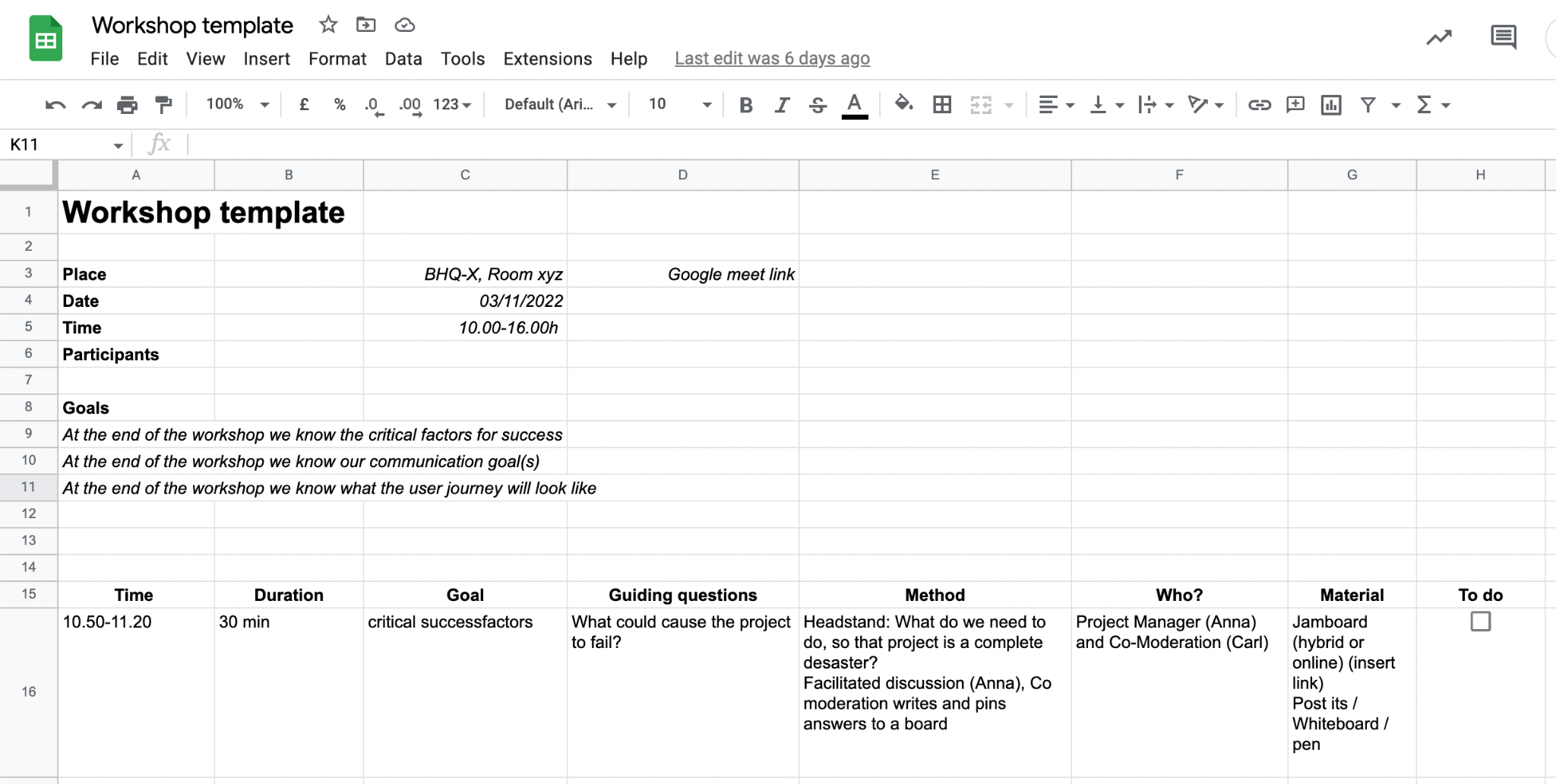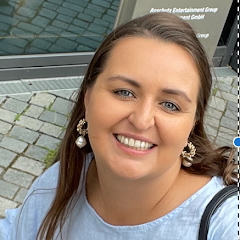How to rule a workshop
Facilitating a successful workshop is not too hard - if you have a plan
As a Project Manager I have lost count of how many workshops I have attended or facilitated. From early days, when I was running over huge campuses with my workshop case full of pens and stickers, over the past two years mostly sitting at home and trying to get a group to collaborate on a digital whiteboard, to overcoming the technical difficulties of a hybrid set up. One thing remains true for all those cases: Facilitating a successful workshop is not too hard - if you have a plan.
First let me define what a workshop is: While a meeting is focused on general knowledge sharing, like updates or brief exchange on a topic, and a training session is to educate an individual or group, a workshop requires a group of experts actively working on a specific topic in greater detail. Having defined this, let's start with making a plan for a workshop!
Set goals.
At the beginning of a workshop you should know what you want to achieve. This will not only help you in the further preparation, but will also come in handy when setting expectations with your stakeholders. I have always found it very helpful to use the past tense, i.e. to phrase my workshop goals as if I had already ended the session - same principle that Zalando PRFAQ (Press Release FAQ) follows. Examples would be "The team has detected the critical success factors of the project", "The user journeys have been developed", "We have enough input to develop a change story". It is absolutely normal to have three to five goals for a half-day working session. In this case it makes sense to prioritise them, so that you are sure to cover the most important things should you run out of time.

Identify your experts.
Once you have clarified what you want to get done, it's time to sit down and confirm who you will need to achieve your workshop goals. Guiding questions are:
How can this person contribute to achieving the goal?
Who can challenge the options?
Who can help us get the broader picture, not forget any points?
It is common knowledge that groups collaborate best when they are rather small (5-6 people is ideal for a vivid workshop). Nothing is more uninspiring than 20 people listening to two people discussing. I am sure you all remember such a situation. It was frustrating, wasn't it?
Sometimes, there is no way around a big group. In such a situation, after you have challenged who is really needed, think how you could split the group during the workshop itself. Are there goals requiring a smaller group of experts that can collaborate in a breakout room?
Estimate the time.
Once you have your goal and your round of participants, it makes sense to have a first estimation of how long you will need to achieve your goals. Tip: Consider breaks, have a buffer for people coming late, and always add a little extra on top - you most likely will need it. Estimating the overall time for your workshop will help you to find the next fitting meeting slot and ensure the people you need will be available. For big onsite workshops, you should block several nearby rooms for possible breakout groups. If during planning you realise that the workshop will be too long for participants to attend it to the end, one possible solution is to decrease the scope by setting smaller goals or by planning a series of workshops.
Some people stop their preparation at this point - and you need to be a very experienced facilitator to rock the workshop with this little preparation. So let's have a look at which additional preparation can help you become a workshop rockstar.
Get support.
Batman wouldn't be Batman without Robin. Every workshop facilitator benefits from a Robin. Depending on the participants and duration of the meeting, you will also have an understanding of what environment is required. All onsite? All remote? Or hybrid? In any case, I recommend having a co-moderator. A co-moderator takes notes (so you can focus on leading the group's discussion), ensures everyone has arrived on the call (so you do not get interrupted), helps people with technical difficulties (so you can talk to the rest of the group), monitors the chat (so you can focus on the faces) or leads a break out session. If you don't have that support at hand, check who from the group of participants qualifies as a good co-moderator, split up the responsibilities and hand them over to several participants.
Know what you are doing and when you are doing it.
A workshop plan can be compared to a shooting schedule. I personally like to use a template to create my workshop plan.

Start with the goals, develop guiding questions and come up with a (fun) method* to get the answers to the question. Now enter who will facilitate that part, what your co-moderator can do here and what materials (whiteboard, stickers, presentation etc.) are required. At the end, estimate the duration of the section. This will help you in ensuring that you will reach your goals in the planned time. Speaking of goals: Once you have filled out the template for all your goals, show your plan to your co-moderator to have it reviewed.
Do it.
Enter the room, have your plan at hand, your co-moderator in the back and don't forget the watch.
*For example: If your goal is to find out about the success factors of a project, you could ask the boring question "what would make our project a success"... Or, you go with a method called "headstand" where you ask the opposite of what you actually want to know "What, as a project team, do we need to make this project a disaster?" instead. Or your goal is to find out how to communicate and collaborate efficiently in the upcoming project so you ask "What do we need to do, to have the most frustrating collaboration experience ever?" Answers like: "Work in parallel on the same problem", "not be up to date", "over communicate", will help you learn how to manage the team in the future. Besides being more fun to plan a catastrophe, it will also make people more open to the solutions you can offer as PjM, e.g. a weekly meeting or cutting long discussions during future team calls. Read more about the headstand technique.



